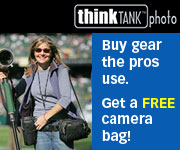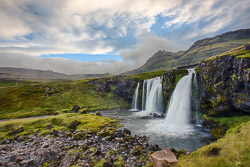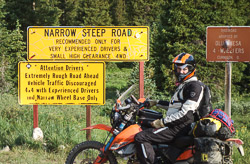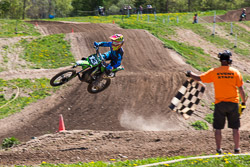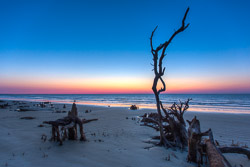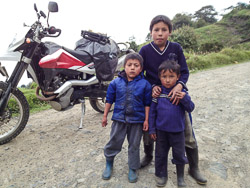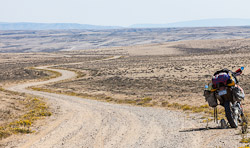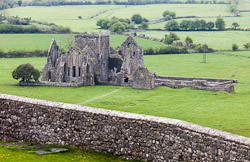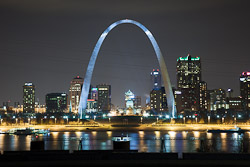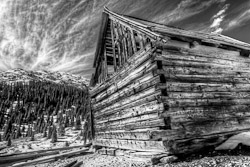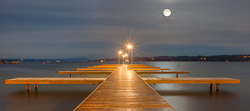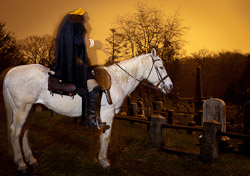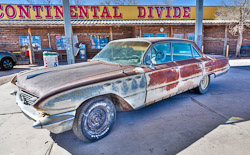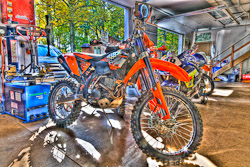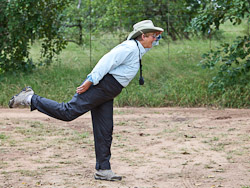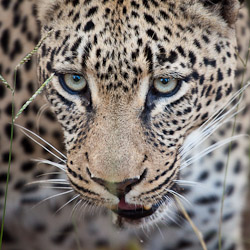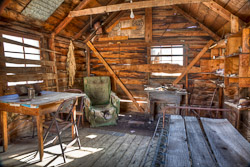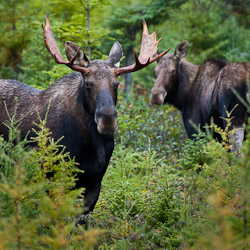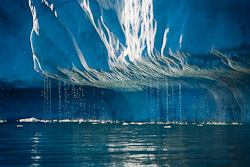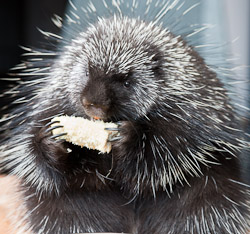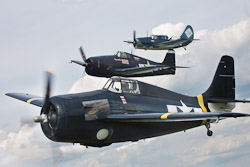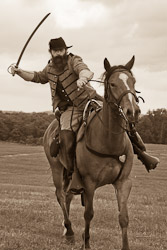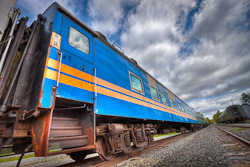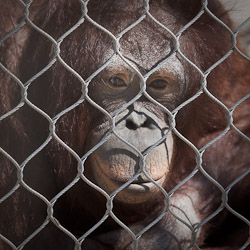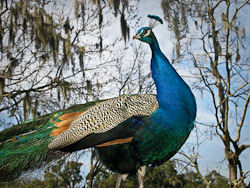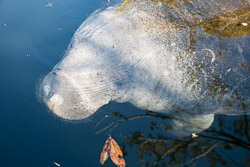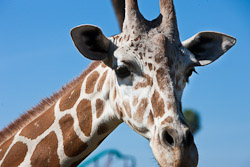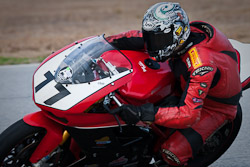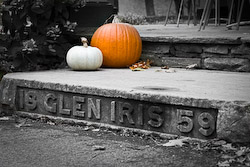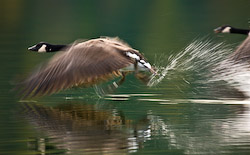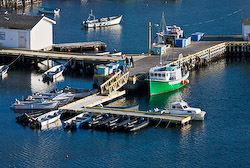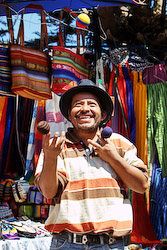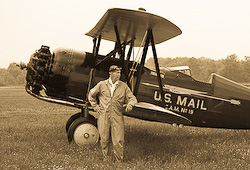Sending email from Adobe LightRoom
I made some pretty radical changes to my digital darkroom last fall. I bought my first Mac (Pro) and I switched to Adobe LightRoom from ACDsee Pro. Either of these changes could fill several posts but this one will focus on what was a major annoyance to me in LightRoom… the apparent lack of a ‘send to email’ feature. In ACDsee (in Windows) I could right click on any image and send it to Eudora, my email client at the time. This was a quick and painless way to send reduced jpgs to friends and relatives. Isn’t this something we all do as photographers?
Turns out the ability to get images directly out of LR and into your email program has been residing in LR all along, but rather well obscured.
There are actually two separate ways LR can manage this and both are useful. If you are reading this far then presumably you have basic familiarity with LR. You know that editing in LR is really just managing a set of instructions. There is no “edited file” until you “export” it. I have always felt the use of the word ‘export’ as LR uses it is a bit confusing for new users, but if you want a jpg (or tif) file representing your editing efforts, you need to export it. This brings up its own dialog box which is rich with features, including the ability to save any configuration of options you choose as a preset.
For email, you might want a file with maximum pixel dimensions of, say, 900 pixels, (your choice). Pick a quality. Decide if you want to show this new file in your catalog, (I always do). Pick a naming convention, (I add the the pixel width to the end of the original name). At the very bottom are post processing options which are normally off. Pick “Edit in” then browse to your email application. For me that is Entourage, (another sad story). Add a new preset using all these settings and give it a name, like “Med qual 900 jpg & email”.
Now, when you have finished working on a cool shot that you want to send to someone, export it using the new preset and voila, your email program is on top with the file attached waiting for you to add a recipient, subject, etc.. Cool. You can select more than one at at time, just do the math so your total attachment size does not exceed the limits of your email provider, (or those of your recipient).
OK, so now we can send files we are exporting. What about jpg files that you have already created and want to email? In LR preferences we can set up external editors which will show up under the Photo menu, Edit In. If you have Photoshop on your computer that will show automatically. You can add others. Set up another one and point it towards your email program. All of the of the settings assume you are actually sending to another pixel editor and not all of them are relevant, but set the color space to sRGB and check 8 bits per channel. (Keep ‘tif’ in the settings even though we are sending jpgs). Save these settings as “Email”.
Now, for any existing email ready image files, select, click in the photo menu in the top menu bar (or right click on the image thumbnail), pick Edit In, then choose “Email”. You will get a new dialog box that asks if you want to use the original (defaulted) or a copy. Stay with original and click OK. Your email program will be back with the file attached just like when you exported it above, ready to go.
I am mystified why this isn’t built into the program or why more folks aren’t clamoring for this as a ready to use feature. Maybe it’s just me. But this works great after a minor effort to set it up. Give it a try.
Follow up note:
When LR was first introduced I was less than impressed and dismissed it as not worthy of my time. However, when I was forced to find a new photo management program for the Mac a review of the then new version 2 caught my eye. All of the issues that made it a non starter when it was introduced had been addressed and some eye opening improvements were added. Now I can’t imagine my photo life without it! What a great program. In a future post I will outline why it is my dream photo program come true.
Photo Panoramas, a quick ‘how to guide’
My recent trek to Ecuador with Safari Party Adventures as a Photo Specialist gave me opportunities to try out the ‘panorama’ kit I picked up from Really Right Stuff just before I left. Since this was my third time visiting the Andes Mountains, I knew I was going to see some amazing vistas and I wanted to capture them as only a true panoramic image can.
The idea, of course, is to take a series of images that overlap and use the power of Photoshop or other specialized pano software to merge them together into one grand image file.
The ability of current software is impressive. I took a series of shots with a pocket camera some years ago with out a clue as to what I was doing and I got a pretty decent panorama of the mountains west of Milan, Italy.
Now I am better educated and I understand the benefits of careful camera control in creating good panoramic images. If your intended panorama composition has foreground details in addition to the usual background stuff then rotating the camera on the so called “nodal” point is critical. Rotating the camera around a point ahead or behind this point introduces parallax errors and the software can’t create a proper merge.
The nodal point is generally well forward of the camera’s sensor plane, so using the the mount hole on the camera base and rotating with your ball head will not produce good results.
This is easy to prove.
Set up your camera on a tripod reasonably level and with a “normal” focal length setting. Set up so that you have a vertical edge somewhere in the foreground and another farther away such that they can be lined up with each other in the center of your view in the eyepiece. Move the tripod left or right a bit if needed to get good alignment of your chosen verticals. Now, rotate the camera so that the two vertical edges are near either edge of your view. Hmmm… the two vertical edges no longer line up. That’s parallax.
With some trial and error, the pano gear lets you make the rotating point and the nodal point the same which keeps the foreground and background relationships in alignment. When achieved, merges result in perfect images without errors.
I did a fair amount of searching the ‘collective consciousness’ for nodal point information on my camera and lens combinations and was surprised that so little is published. For a given lens, body, and focal length (assuming a zoom), the nodal point is fairly predictable. At the bottom of this post I have listed the distance in millimeters from camera mount hole to the rotation point for a number of lenses and focal lengths. If you have the same gear there is no reason I am aware of why my offsets will not work just as well for you.
In addition to the above, the camera needs to be level and the actual rotating axis must be true vertical.
These special demands have generated a lot of mounting solutions from a variety of manufacturers, but since I had committed to the Really Right Stuff mounting system for my cameras and tripod I was by default rather inclined to go with their panorama gear. There is no downside to this… the RRS stuff is the best and second to none… except for the cost. It ain’t cheap, but it is gorgeous in every functional and visual way. (If you are ‘handy’ and a bit resourceful, a little googling will give ideas on making your own pano gear).

Once the camera and pano gear are all set for the vista you want to capture, you need to turn your attention to camera settings.
Essentially everything goes to manual. You don’t want the exposures and focus changing as you swing to a new part of the view. You won’t like the results and is nearly impossible to fix in post processing. So a short check list…
- Manual exposure. Check several parts of the anticipated pano and pick the best average exposure, making sure you don’t overexpose and lose highlights in any given part of the scene. Take a few test shots. Confirm you have the depth of field you desire.
- Manual focus and (for most lenses) IS (vibration reduction) off. Check focus. (… but it’s easy to forget!)
- Remote release is always best (especially if shutter speed is below 1/focal length seconds). Add mirror lockup if below 1/60.
- Set White Balance to something besides “Auto”, (try “Cloudy” or any other fixed setting).
Composition hints
Include more of the scene than you think you want on all four sides. The merged file will have scalloped edges and the corners will be pulled in. In the process of cropping the image to straight sides more will be cut away than you would think and you may not be able to get the final image you intended. I have found the best way to deal with this and keep the focal length I want is to shoot with the camera vertical. This means more individual images to get the panorama you want to capture, but the software is doing all the work so what’s a few more shots?
Overlap each shot with the previous by approximately a quarter. I changed my view screen in the 5D to the one with vertical and horizontal lines on it… a great aid for noting “targets” in the view. An object on the left hand line I set to the right hand line when I swing the camera. Any approximation is fine. I ignore the very nice engraved degree lines on the RRS pano head, but I could use them if I wanted to. (Who wants to count degrees when trying to capture an amazing scene?!)
Some folks have advocated shooting panos in jpg and / or at a reduced resolution if your camera offers it on the theory that you are combining images and will get lots of resolution in the final product. I, however, subscribe to the school of “don’t throw away good image data”. You may find later that one of the shots will make a nice image by itself. Also, I shoot RAW. Period. Shooting jpg is like taking off in a plane with less than full gas tanks. Why limit your options?
Yes, the merged image will be a big file. So what? You can make it any size you want in post processing.
 Five images combined, volcanic lake, Quicocha Lagoon, Northern Ecuador
Five images combined, volcanic lake, Quicocha Lagoon, Northern Ecuador
Click on image for larger view
Making panoramas is great fun and it will add a new perspective on how you view the world. Give it a try, (even without the panorama gear)… you might be surprised!
One last reminder… don’t forget to reset your camera to your “normal” settings after shooting your panoramas. It is very annoying to miss a great spontaneous shot later because the focus was still on manual, IS is off, and the mirror lock up is still engaged!
My Offsets for Canon 5D or 1Ds3 and the following Canon lenses:
17-40 @ 40mm, 132mm offset (OS)
24-105 @ 24mm, 110mm OS, @ 50mm, 105mm OS, @ 70mm, 80mm OS, @ 105mm, 50mm OS
70-200 @ 70mm, 47mm Os, @ 100mm, 5mm OS forward, @ 135mm, 16mm OS forward, @ 200mm, 4mm OS
Travel Photographer or Beast of Burden?
As a boy who grew up playing in the nearby woods and fields, it should come as no surprise that I became a Boy Scout. The one thing about scouting that really was a fit for me was captured in one of their mottos… “always be prepared”. It is nearly a half century later, and I still try to live by that motto. However, as a photographer who has managed to accumulate several bodies, many lenses, tripods and a long list of accessories, this philosophy has led me to an aching back on many trips.
In April I trekked around the spectacular American Southwest taking photos. One memorable day was spent at Zion National Park where we chose to venture up to Angels Landing. This is a 1500′ vertical climb in about 2.5 miles. As usual I had my LowePro Vertex 200 photo backpack and tripod. WHAT WAS I THINKING? I definitely did not need my 100-400 or the flash head. With a half mile behind us one of the twenty something members of the group took pity on me and volunteered to carry my pack. “Well”, I said… “if you insist”. By the time we completed that climb up and back my 35 pound pack took most of the starch out of my young friend. “Better him than me”, I thought to myself… “he’ll recover in a few hours”. Ok… lesson learned… one can be OVERprepared.
I had a similar weight related problem checking bags at the airport on a different trip. I cut the margins too close and was over the 20 Kg limit. (I blame my old heavy tripod). The resulting stress of opening the bag to pick out a pound or two of whatever to get back under the limit along with the glares from other travelers waiting behind me was another ‘last straw’. “Never again”, I told myself. I bought a digital luggage scale from eBay for less than $20 (search “luggage scale” and take your pick). Now I weigh everything and know precisely what weights I am dealing with.
For those of you who will be joining me on the upcoming Pro-Ecuador – Safari Party Ecuador Photo tour, this is my way of backing into the subjects of, “what do I need for this trip without becoming a beast of burden?”. We can be prepared for nearly any photo situation and have the proper attire for weather and social situations by being smart about our choices to minimize weight and bulk. (Note: There are still a few openings left for this great photo adventure, go here or feel free to e-mail me directly and we can arrange to use that other great invention, the telephone.)
Since this is about preparing for a photo tour, let’s start with the photo gear.
There are really two aspects to the issue of how much to bring. One obvious limit is staying under the airline requirements for carry on. The other is deciding how much you can manage on an everyday basis while out shooting. An option here is to consider bringing a second smaller belt or shoulder bag (stuffed into your checked luggage) which you use to carry only what you need for any given outing. With the possible exception of your tripod and miscellaneous stuff, your camera and lenses must be with you at all times during the air travel phase so that means whatever bag you choose must fit in the overhead or under the seat in front of you. My well traveled LowePro Photo Trekker AW would fit in either location carrying a 20D or 5D and three lenses. Admittedly, this is a squeeze for under the seat, but doable. Now I am sporting the LowePro Vertex 200 as it can safely carry my laptop and is better able to handle the tall 1Ds body, BUT, it is an ‘overhead’ bag only. Under the seat is not an option. My second carry on is a soft bag that I use for the laptop after reaching my destination, and a bunch of the other miscellaneous stuff most of us take with us. Check manufacturer’s websites for dimensions and overhead compatibility.
Gear wise, this is what I consider “essential” for good photos in a variety of situations. (A quick note here… if you are shooting an advanced “point and shoot” or a digital with a non removable lens, much of what follows won’t apply… you can decide what is relevant).
Tripod
If you haven’t bought one yet, spend as much as you can possibly afford, then spend a few bucks more. The lightest and strongest are carbon fiber. Get the best ball head you can manage as well. This link covers the subject quite well.
Cable Release
Good landscape exposures require a steady camera, which means a good tripod (see above) and not touching the camera during exposure. A cable release, (they were cables in the ‘old’ days, now they are essentially a switch on a long wire), means you don’t have to touch the camera to take the shot. This becomes super critical for long exposures. Some of the most exciting photography starts at sundown and goes well after dark. You need a cable release for these shots. They are cheap… check eBay for knock offs, though the factory units are usually better quality. If your camera doesn’t support an external release, learn how to use the timer virtually every camera has, or the wireless remote if your camera comes with one.
Lenses
This is where the pounds and dollars can add up, although the new generation of wide range zooms is quite amazing both in value and size. The ideal is to cover the range of focal lengths from wide to telephoto with a minimum number of lenses. In 35mm film parlance, a focal length of 50mm is “normal”, (the perspective of your unaided eye), 16mm is “wide”, 100mm is a mild telephoto, 200-300 is telephoto, and so on. Personally, I am waiting for the 15-600mm F1.4 stabilized super lens. It is made of Unobtanium and costs infinite dollars. It will be released as soon as the laws of physics are revised a bit. Since most of you are shooting with sensors that are smaller than 35mm film you multiply the lens length by a ‘factor’, typically about 1.6, to get the ‘effective’ focal length. A good “walk around lens” for sub full frame sensor cameras is something like a 17-85mm or slightly longer, (24-105mm full frame). If landscapes excite you, then a wide angle is highly desirable. There are now 10-17mm that get the full frame equivalent of 17-24mm. This is a real ‘work horse’ focal length. For various wildlife shots a telephoto that can reach 200-300 is the ticket. If you want greater reach, consider a “tele-extender”. A 1.4X will cost you an F stop in exposure but add half again to your telephoto focal length. They are only about an inch and a half long and weigh very little. If you don’t want to miss possible macro shots, consider a set of “extension tubes”. These go between the camera and lens but have no active glass in them (as the tele-extenders do). A cheap set is less than $100 and will give very good results with your walk around or telephoto lens. In this scenario you might have three lenses which fully cover from wide angle to telephoto. You could easily get away with two lenses if you have one of the new generation wide range zooms, but none of these do justice to wide angle needs. If your budget is already strained and new lenses are not in the program, don’t worry about it. Bring what you have. If you come upon a scene that begs for the wide angle you don’t have yet, you may be able to ‘cheat’ and take a series of overlapping images that get stitched together in post processing. You won’t have the great depth of field wide angles are noted for, but you will get ‘the big picture’.
Filters
A lot of shooters now assume they can get whatever effect they want through the magic tricks in PhotoShop, and there surely is quite a lot of magic in there, but there are still things better (or only ) done at the camera. Two filters I use often are a circular polarizer and a neutral density (fixed or variable). Polarizers are often abused by way of “too much of a good thing”, but they are wonderful for dealing with reflective surfaces (water) and richening up a blue sky. Neutral density filters allow you to use long shutter exposures in full light. Want to make a waterfall look smooth and milky in broad daylight? You need a neutral density filter to do that. The best one is the Vari-ND by Singh… you can dial in the f stop reduction you want from about 1.5 to 8. Very cool, but it is also expensive. (They could use some competition). The fixed ND filters are more affordable. What ever you decide, when buying filters, size it to the largest lens you have and get reducer rings for a few bucks each to allow matching up to your smaller lenses.
Batteries
You need at least one spare camera battery and don’t forget the charger. Electric power and outlets in Ecuador are the same as the US, so no problem there. If you are bringing a “bunch” of batteries and they happen to be Lithium-ion, check out one of my earlier blogs on that subject. The FAA has new rules regarding these, but in practical terms it is not an issue for most of us.
Memory Cards
There is no one answer here that fits everyone, but cutting to the chase, here is the concept. Ideally you want to have three copies of every image when you are heading back home. One set goes in checked luggage, one set stays with your camera gear, and another set goes in a separate bag or is carried by a traveling companion. If three is too hard to pull off due to limitations in equipment, then at least two copies. Bad things can happen to good images. There are numerous strategies to pull this off. Not too long ago memory cards were expensive, so we downloaded our images to other media and recycled our cards. Times change, gas now costs a fortune, but memory is almost dirt cheap. One strategy is to buy enough memory so that you don’t have to reuse them during the course of the trip. How much memory is enough? How many images are you going to take? Do you shoot RAW or just jpg or both at the same time? Obviously it’s impossible to know for sure what you will need, but you can do some estimating. Put an empty card in your camera. Set it to max quality jpg and note the image counter. Set the camera to RAW and do the same thing. With my Canon 5D and a 2 gig card I can get 366 jpg or 121 RAW images. Big difference, but I shoot almost exclusively RAW so that is what I use for calculating. We won’t be shooting every second of every day, but based on my experience, it is easy (and ‘normal’) to shoot several hundred images a day on average. Most of them may never see the light of day again, but the idea is to take them and then decide what to keep back in front of your monitor at home. Again your mileage will vary based on your camera and shooting style, but having 20 gig of card memory is by no means overkill if you have a 10-12 mega pixel camera.
Image Backup
What is the best way to backup images? Again it depends. If you are traveling with a laptop, its hard drive will serve as one backup, assuming you have 30+ gigs of free space. The laptop then offers several other options. One is burning CDs or DVDs and the other is bringing a small (60 gig or larger) external hard drive. That actually gets you four copies if not recycling your cards and qualifies as overkill. I recycle my cards but use the laptop, DVDs and an external drive. If you are not traveling with a laptop, there are quite a number of small portable stand alone drives that have built-in card reader capability. Some like the Epson P3000, also have a built in high quality screen which allows reviewing or showing off your images. These are pricey, but very nice. The versions without screens are much more affordable. Having enough cards to last the trip and a card reading back up drive is the simplest approach to a two copy backup strategy.
Since I always travel with a laptop you may be thinking, “Maybe I can use Paul’s laptop to backup”? Well, nothing personal, but short of an emergency that is not an option. Given my limited storage, card read times, and the fact that my 1Ds creates humongous files, it simply isn’t practical. Then there is the responsibility of protecting the precious shots of someone else. Who needs the stress?
Other Stuff
For those of you who don’t know me, my middle name should be “Gadget”. For travel work I like to “geotag” my images. Geotagging is adding the Lat – Long position data of the image location directly into the metadata of the file. I bring my Garmin 60CSx GPS to do that (and give me a track to retrace my steps if needed). Remember that all these electronic toys need batteries, chargers, cables, ad nausea. Don’t forget a good lens cleaning cloth and fluid. The best is ROR by V-Max Products. Put it in your checked luggage so you don’t get hassled at security. A small LED flashlight is essential for night photography. There are some cute ones out there that don’t use batteries… you crank the hell out of them and they provide good light for a surprising amount of time. Make a checklist now and review it several times before departure.
Clothes and Luggage
Some of you are probably experienced travelers, but perhaps this is your first out of country adventure. Trust me on this… you will hate yourself if you have more than one checked bag by the end of the trip. Schlepping multiple bags around airports and hotels gets real old, quick. A personal bag, your camera bag or pack, and one medium size bag on wheels is the ideal. You want to be able to manage all your stuff by yourself. Use the smallest bag that will fit your essentials, but it you are thinking about packing your tripod in it, make sure the body of the bag is long enough for it to fit. You might have to remove the ball head. One can normally manage a folded tripod as part of your carry on by removing it from the pack before stowing overhead, but I usually pack mine in checked luggage so I don’t have to deal with the added weight on the camera pack or the extra hassle of detaching and stowing while other travelers are boarding the aircraft.
After packing the tripod, battery chargers, cords, etc., is there any room left for clothes? Absolutely! Synthetics, or more specifically the various polypropylene blends that are now very popular. I resisted them for a long time, but now I am a true believer. Check out REI.com or LL Bean. There are now dozens of super lightweight, moisture wicking, quick drying and smart looking clothes for the adventure traveler. Pants with zippered legs can also serve as shorts. I stay with long sleeved shirts to deal with the sun. T shirts, undies, and socks, … all are available now in synthetics. . A quick rinse in the sink and they are dry in short order. Three of each are all you need. The reduction in weight and bulk is amazing. Any sporting goods store also carries a huge variety. With some careful shopping the extra cost is not very much. For the Ecuador itinerary virtually all meals and other social situations will be strictly casual. Nothing fancy required.
We will be doing some walking everyday so good comfortable footwear is in order, but even the hiking will be easy. Serious hiking boots are certainly not required and they take up a lot of room in your bag when you are not wearing them.
A rain jacket of some sort is advised even though we won’t be there in the rainy season. It can serve as a wind breaker and with a light sweater or fleece underneath you create the layers that work well for the possible cool evenings high in the Andes. There will be opportunities to swim or at least relax in the water, so a swim suit is a good idea.
As you can appreciate, I have only touched lightly on any one of the points mentioned here. By all means, e-mail me with questions, personal gear concerns or points you think I have over looked. There will be more posts from Sandy, Jason or myself before it is time to start packing, but start thinking about your gear now. Don’t wait until the last minute. “Be Prepared!”
Recovering Lost Images… PhotoRescue to the Rescue!
If you have never formatted the wrong card, deleted the wrong image in your camera, or deleted an image from your PC (or Mac) before it was backed up AND put the card back to work, then you haven’t been taking pictures long enough. You will eventually make one of these all too common errors. After mentally berating yourself you will be asking, “How can I put the bullet back in the gun”?
Well,there’s no putting a bullet back, but guess what? Deleting and formatting media doesn’t erase files, it just makes that memory space available to be used again. The files are still hidden away in the silicon; it just takes some clever software to put Humpty Dumpty back together again. So, the first thing after discovering the error of your ways? Stop using that card! (You don’t want to risk writing new image data over the old). Then, take it to your computer where your copy of PhotoRescue is waiting to save your butt,… sorry, files. “Waiting?” Yes. You are going to be glad you have it when you need it, so go to www.datarescue.com, pay your $29 and be ready for the inevitable.
Once you get to to the site there are three flavors of PhotoRescue… the “Wizard” or 3.1 version, the “Expert”, or 2.1 version, and the Professional version. Forget the last one unless you want to provide recovery services or are involved in image forensics. The “Wizard” has a somewhat cuter GUI and may be a bit faster than the “Expert”, but I had issues with slow recognition of my card reader, and , well, it crashed before it finished my test. The “Expert” V2.1 however is claimed to be a bit more powerful and is the flavor I have been using for several years with consistently great results and unflappable stability. This program will pull stuff off a card, intact, that you would not think possible…. images that you took many formatting sessions back. You select any or all of the images it finds, shown as thumbnails, and PhotoRescue then saves them to wherever you specify on your hard drive. It supports all the usual photo extensions… jpg, tif, and most of the popular RAW formats.
If you are still skeptical, you can download a demo and try it on a card you have just formatted or deleted images from. It will show you the thumbs of what it can recover, you just can’t save them…. until you make the purchase. It’s saved my bacon more than once and that of a fellow photographer friend who recently lost a hard drive and some images that were not yet backed up. Turns out he had not used any of his memory cards since the images were taken, but they had all been formatted. No problem… every image (and many more) were successfully recovered. PhotoRescue came to the rescue!
FAA Li Battery Ban… what happens on my next trip?
Here it is the 24th of January and as I cruised through the paper at breakfast I came upon a little AP article saying that lithium batteries were under new restrictions by the FAA as of Jan 1. My first reaction was, “what planet have I been living on that I am just hearing about this!?” No, actually my first reaction was, “Oh s**t… I always travel with more than two Li batteries for my camera gear! Now what?!”
I did what any modern day info sleuth does… I googled the ban. OMG… the net is a wondrous thing but it can be very hard to hear the music for all the noise. I finally drilled down to some reliable information that is fairly easy to understand. That’s in stark contrast to what the FAA publishes. As a pilot and engineer for 30+ years I can read and successfully interpret most technical stuff, but FAA rules are in a class by themselves. Let’s not go there.
The bottom line is this… virtually all our camera, cell phone, and laptop batteries fall into the “small” category and as such we are not limited to two batteries as has been reported by various venues. We are limited to 25 grams lithium total, 8 grams carry on and while I won’t get into the calculations here, that is a lot of small batteries. This is taken from the latest DOT brief….
“Common consumer electronics such as digital cameras, cell phones, and most notebook computers are still allowed in carry-on and checked luggage. Moreover, any number of spare batteries for these devices will be allowed in carry-on baggage if they are properly protected from short circuiting and do not exceed 8 grams (~100 watt hours) of equivalent lithium content. Most lithium-ion cell phone and standard notebook computer batteries are below 8 grams (~100 watt hours) of equivalent lithium content. Batteries not installed in electronic devices are not permitted in checked baggage.”
So, no ‘loose’ batteries in checked luggage. They must be in the device they are intended for. (Not a very good idea from a theft point of view, but that’s another issue.) For the spare carry on batteries, tape over the terminals or put them in individual plastic bags. This is to prevent accidental shorting. Lithium is an impressive substance in terms of the heat it can generate when it combusts. I know the terminals on the Canon batteries the 5D and G9 use are recessed… it would take a concerted effort to short them so accidental shorting is virtually impossible no matter where they are flopping around in my camera pack, but the FAA must have a better imagination than me, so isolate and insulate.
If you want to do the math, find the capacity of each battery (usually in tiny print somewhere on the battery), typically expressed in mAh, divide by 1000 to get the amp-hours, then multiply by.3 for grams of Lithium. If your camera battery is 1390 mHa (Canon 20D, 5D) then 1390/1000 x .3 = .42 grams. If I had five of them with me my total would be 2.1 grams…. well under the 8 grams allowed.
Better living through chemistry and our government, who loves us.
Shaky CD’s…. or What’s Buzzin’?
Yeah, I know… this is supposed to be a photography (and related) blog and so you are asking yourself, “what does shaky CDs have to do with photography?”. Well, the computer is the nerve center of photo processing and most of us have stored or transferred images via CDs, and now DVDs too, so you see, it is related.
A friend brought over some files for me to work on the other day on a CD and since Murphys Law was in full swing that day I could not read some of the files. I was also thinking that my PC was making some nasty sounds it doesn’t normally make. After ejecting the disk (the source of the noise)I noticed that it was labeled with a standard run of the mill 1×3″ self adhesive label about an inch from the center of the disk.
Hmmm… could that little label be the source of the noise and the reading problem? After all how much can a paper label weigh? Well, it’s not much. .00033lbs to be precise, give or take a couple of 10 thousandths. (Yes, I weighed it.) In my other life as an engineer I keep some formulas handy in my spreadsheet program and one of them calculates centrifugal force. Let’s see how “heavy” a little piece of paper is at the 5000-10,000 RPMs, (no, that is not a typo), that a typical CD spins at now days.
This calculation finds the centrifugal force of a mass spinning around an axis…. think of a soft ball on a 6′ rope that you start swinging around over your head. The ball starts getting “heavy” as you swing faster and faster. Well, our little bitty piece of paper exerts a radial outward force of just under a quarter of a pound (like the heart attack hamburger) at 5000 RPMs, and just under 1 pound, (a loaf of good bread), at 10,000 RPMs. Yikes! No wonder my CD drive was making noises. That is a very large imbalance and the result is a lot of vibration. (If the label was 2″ from the center the forces would double!)
Guess what? After I removed the label the drive became silent again and I could now read the problem files. Amazing. (Yes, I loved Mr. Wizard as a kid. If you don’t know who that is, young fellar, Google him.)
So what are the best ways to label our CDs and DVDs? Some of the printers on the market now have disk printing capability. They need disks with a special surface coating for the inks to adhere to, but aside from that, if you have one of those you’re good to go. For the rest of us, Sharpie makes felt tip pens made just for CDs use solvents which won’t attack the plastic. I have gotten away for years using their standard permanent marking pens, which may not be approved, but I keep the writing in near the center when possible. (If you are using the premium quality archival gold disks, such as the Delkins, you should probably use the approved pens). Verbatim and Avery both make circular labels that are self adhesive and can be run through a printer if desired and are then applied with a little fixture they provide to make sure the label stays centered. Personally, I am not that motivated, but hey give it a go. What ever you do , don’t use a ball point pen as there is a good chance that the data layer can be damaged.
I bet you never thought much about CD labels before all this. You can thank me later!
Digital Photography… Books for Getting Started
You may be wondering what I mean, “getting started” when there have never been more cameras out there, in the hands of more people, taking more pictures, than any other time since George Eastman started Kodak early in the last century. Even cell phones can take photos now and children are using point and shoots, so how hard can it be? I am referring to those folks who have been taking pictures with various degrees of success, but now want to create images that can be truly admired. That means having to study and learn a few things beyond the on – off switch and the shutter release.
There is a tremendous amount of educational material available for free on the web now, but, call me old fashioned, a good book on any subject is hard to beat. You can read it at lunch, take it to bed, it doesn’t need batteries or a power brick… books are great. I am often asked what books I would recommend for beginning photographers. It could be a very long list but for just starting out there are three that I think are a terrific value and get to the heart of making good images.
The first is The Digital Photography Book by Scott Kelby. This is a “what & how” book where each page succinctly deals with a specific photographic subject. Many of the lessons are very elementary (though essential) and yet there are tips and tricks that are useful reminders for even more seasoned shooters. Pretty inexpensive at around $15. Available from Kelby directly, as well as Amazon.com and even from displays at your local fast print center.
The other two books really get to the heart of making good images; setting the correct exposure for your image, and training your eye to ‘see’ an image in the visual chaos we are all flooded with every day. Interestingly, but perhaps not surprising, is that, Understanding Exposure and Learning to See Creatively are both by the same author, Bryan Peterson. Both books are easily digested and are filled cover to cover with great photographs supporting the author’s points. Even if you have been shooting for a while and think your images are pretty decent, these two will help you improve your game. Again, look to Amazon.com or your local bookstore for these two great references.
On the post processing side there are also (too) many to choose from, but for me it’s simple. If you are using Adobe PhotoShop (or Elements), then Tim Grey is your author. The two on my shelf are Photoshop CS3 Workflow and Color Confidence. I am also a big fan of his question and answer of the day email, DDQ. You can sign up at his website. A nugget every day.
Software You Didn’t Know You Need
When I first started making my own prints, back in my college days, I spent a lot of time in rather stuffy dark rooms working with a lot of messy and smelly chemicals. When my co-op period flipped over to a work experience (or vice versa), I packed up my somewhat portable darkroom gear and dragged it all to my new digs, wherever that might be. It took a lot of time and work.
Fast forward to the digital darkroom of today…. a computer with a decent (and calibrated!) display, photo editing software of choice (yes, there are choices), and a printer, (assuming prints are your intended final product). Certainly the tools of imaging have gotten a lot lighter and nearly never smell. (Actually, I have used software that “stinks”, but it is usually my brain that is offended now and not my nose!)
I think I would argue that once you have captured your digital images, the balance of your work relationship with them is via the computer, or more specifically, the installed software. Yes, you have a photo editor, but have you taken a step back from the keyboard recently and taken stock of the other software tools that you use, or perhaps should use, to improve your imaging work flow and security?
Here are some of the really useful programs I have found to be indispensable in my computer environment.
TinySpell+ (www.tinyspell.com)
This clever little program is a spell checker that pretty much watches everything you type, regardless of the application. I am a stickler for correct spelling, but the dictionary in my brain is only so-so and only larger applications usually have them built in. Think of the situations where you are writing and mistakes can be embarrassing and require rework later… titles in your photos and galleries, text entries on your web site pages, posts in on line forums, etc., etc.. When you are typing along and make a mistake there is a “boink” from the computer alerting you to your mistake. You can fix it right then or wait until you are farther along. There is a free version, but the full featured one costs a staggering $7. You can pay more if you like…. I paid $10 just so I wouldn’t feel like a cheapskate! A real bargain.
Clipmate (www.thornsoft.com)
Clipmate is a clipboard ‘extender’. Everyone is familiar with the clipboard functionality built into Windows. Whatever is selected, hit Ctrl + C, go to the new spot in the same or any other application and hit Ctrl + V, and presto the part you grabbed is now pasted into the new spot. Trouble is, the standard clipboard only has the capacity to hold one clip at a time. What if you could save all of the things you ‘clip’ and then have them available to paste later? Think of the possibilities! This, folks, is a very powerful and work saving utility. I am lost on a computer that doesn’t have it. Highly recommended and not too expensive… $35 for a single license with many reasonable options for multi computer environments, like a home or work network. Free trial, too.
Let’s talk about data security. Here’s the tough love speech. If you don’t have multiple copies of your precious photos and other important data, then you are going to suffer some real heartache! When you think hard drive, think firecracker with a fairly long fuse. How long is the fuse? One never knows until it is too late. Present hard drive technology is amazing. Amazing that it works at all, that is. Hard drives are electro – magnetic – mechanical devices with working tolerances that are nearly too small to fathom. When those tolerances are crossed, puff, your data is toast. I have had new drives fail during formatting. I have retired working drives due to lack of capacity after several years of hard use. Too many to count have failed ‘before their time’ without warning. It’s a crap shoot and I for one can’t wait for the solid state hard drives to catch up to and replace the present technology. Until that day, we have to assume the worst and be prepared for it. For a back up strategy to be effective, it needs to be as nearly automatic as possible, otherwise, human nature being what it is, it gets forgotten or put off until another more convenient time.
I use a multi-faceted approach. If the computer is “mission critical” and down time is costly, I use a RAID ‘mirror’ array…. essentially two drives that are virtually the same, but the computer sees them as one. Either one can fail and the bunny keeps marching. The downside is that it requires more $ and is more trouble to set up. Most of you (and myself on my photo computer) use a single hard drive as the C: drive and this is where the operating system, program files, and your data is stored. Kind of breaks the old adage, “don’t put all your eggs in one basket”, doesn’t it? Another approach to solving this problem is to install a second hard drive in the system which has been ‘cloned’ from the first. The cloning process is not difficult and requires special software (more on that below), but your system then sees them as two distinct drives, C: & D:. If C: drive failed, the operating system would automatically see the second drive as the new C:, which is great as far as that goes, but the data files would only be current at the moment they had been cloned. So this setup is not complete without software which monitors the data files (of your choosing) on the C: drive and keeps the same files “synchronized” on the second cloned drive in real or near real time.
Vice Versa (www.tgrmn.com) is the backup – synchronizing software I use to keep my two drives data synced. It is loaded during start up and resides in the system tray. Once the backup profiles have been set up the program runs on its own, constantly monitoring the source files and copying any changes noted to the target drive. Neat, no muss, no fuss.
One back up copy of your photos is not enough. Think fire, theft, lightning or any other physical disaster. Both copies can be gone. Not good. There are a number of alternatives to cover this, including NAS (network addressable storage), if you have a network. The best choice, IMO, is one that uses external hard drives that spend most of their time in a location different from the PC. Some discipline is required as you need to periodically pull the drive out of storage, hook it up to the PC, typically by USB or Firewire and manually commence the synchronizing. External hard drives cost more because of the enclosure, but a cheaper internal hard drive will work perfectly just sitting on your desk with the use of an inexpensive adapter to provide power and a connection to a USB port. In this scenario I use a universal hard drive adapter made by Apricorn (www.apricorn.com) and available from them or www.newegg.com. This particular adapter will work with both conventional IDE drives or the newer SATA drives. The real bonus is that this adapter comes with cloning software. What a deal!
For these synchronizing operations I like a program called FolderMatch, (www.foldermatch.com). With this utility, I can simultaneously look at any two folders, compare them, see the differences and make them the ‘same’ in a dozen different logical ways. A very versatile and useful program.
The last two utilities I will mention here have little to do with your photo work, but pertain more to maintaining your PC. I could get sidetracked about the issues of the Windows operating system, and, yes, Mac is an alternative, but the reality is that most of us are running Windows in some flavor and Windows is a messy operating system prone to gradual self destruction. For years, I have used the “One Button Checkup” feature which is part of the Symantec (Norton) security package I installed. It is set to run every Friday at 5 PM and it looks at the registry, shortcuts, and program integrity, analyzes them for problems, identifies any it finds, and ‘fixes’ them. It always amazes me how many errors are found on a weekly basis. I can’t imagine what lurks in a machine that has been running several years since the OS was installed. If you don’t use any of the Symantec products, I recently loaded a free utility that does much the same thing… WindowsCare Personal, (www.iobit.com).
This last utility gives you the opportunity to look at what is being loaded from the Windows Start up menu, and if you choose to, block it from starting. You would be amazed at the number of not so useful programs that get installed over time that you end up not using, but take computer resources that would be better used by the other software that you do use. Check out What’s Running… (www.whatsrunning.net).



